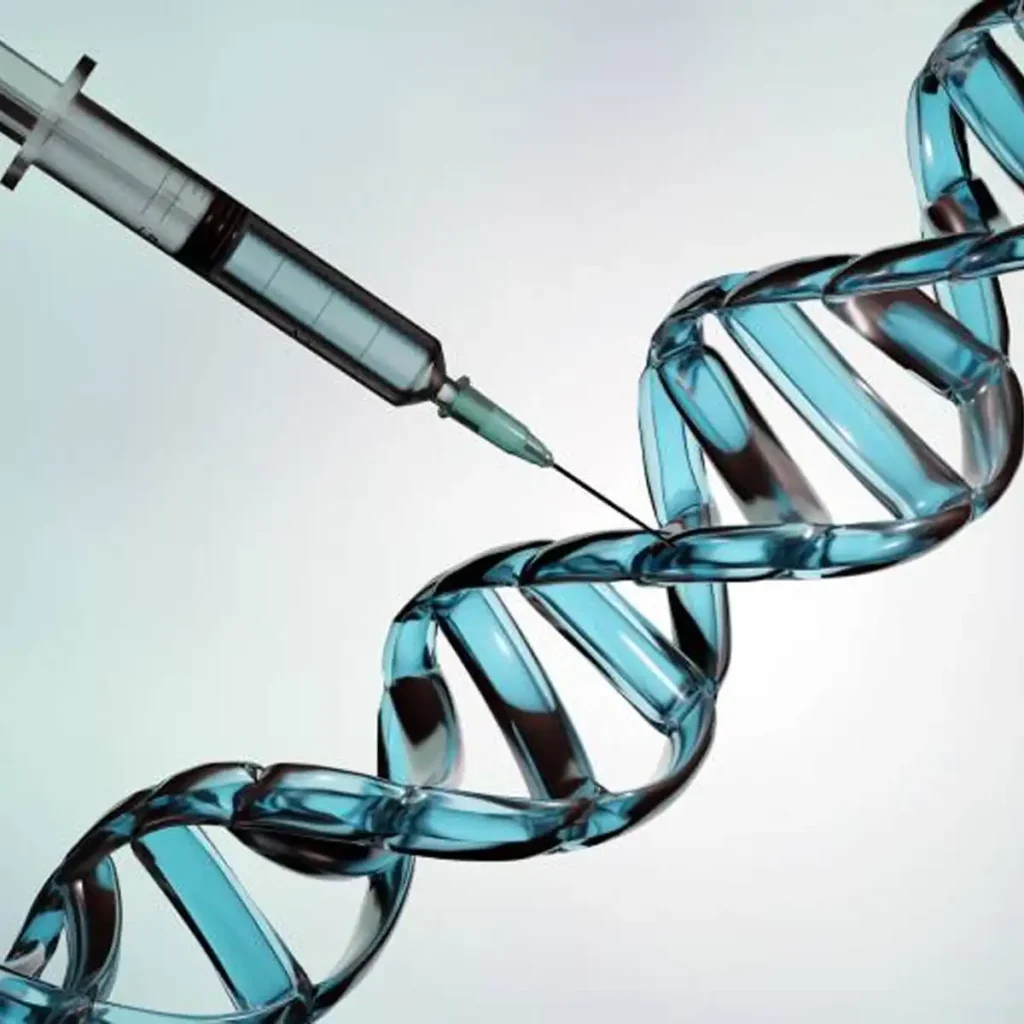Gene therapy in 2025 from vector design to regulation
Gene therapy is moving from specialist promise to established practice in 2025. Approvals have broadened across indications, clinical data in Huntington’s disease have shifted expectations for neurology, and regulators have formalised flexible pathways for small populations. In parallel, precision editing and vector engineering are reducing risk and improving targeting. The result is a credible pathway from discovery to licensed medicine, although manufacturing scale, analytical robustness, and affordability remain limiting factors. This article synthesises the clinical, technical, regulatory, and economic contours that define gene therapy today, drawing on recent approvals and guidance to map where evidence is strongest and where uncertainties persist. It is written for researchers and professionals who require clear signals separated from noise. The goal is informational authority, not advocacy.
Real fact: In September 2025, multiple major outlets reported Phase I and II data suggesting a 75% slowing of Huntington’s disease progression over 36 months after a high dose of uniQure’s AMT-130, with marketing submission plans announced for early 2026, pending full validation and review.
Approvals and late-stage therapies
A steady cadence of approvals in 2024 and 2025 confirms clinical and regulatory maturity across several platforms and organs.
Ryoncil. In December 2024, the FDA approved remestemcel-L-rknd for paediatric steroid-refractory acute graft versus host disease. It is the first FDA-approved mesenchymal stromal cell therapy and an off-the-shelf product that advances the logistics of allogeneic cell therapy.
Encelto. In March 2025, the FDA approved Encelto, an encapsulated cell implant for the treatment of macular telangiectasia type 2. This validates sustained intraocular delivery using engineered cells and demonstrates a device-enabled route for long-acting protein supply in the eye.
Vyjuvek. Krystal Biotech’s topical HSV-1 based gene therapy for dystrophic epidermolysis bullosa was first approved in May 2023. In September 2025 the FDA approved an updated label, reflecting evolving evidence and use.
Papzimeos. In August 2025, the FDA approved zopapogene imadenovec-drba for the treatment of recurrent respiratory papillomatosis. It is the first approved therapy for adult RRP and targets HPV 6 and 11 with a non-replicating adenoviral immunotherapy, supported by a single-arm study in a high unmet-need setting.
Casgevy and Lyfgenia. In December 2023, the FDA approved the first CRISPR-edited therapy, exagamglogene autotemcel, alongside a lentiviral alternative, lovotibeglogene autotemcel, for sickle cell disease. These approvals established dual technical paths for haemoglobinopathies.
China’s first MSC therapy. In January 2025, China’s NMPA granted conditional approval to Ruibosheng, a human umbilical cord-derived MSC therapy for steroid-refractory acute graft versus host disease, signalling global diversification of cell and gene therapy regulation and access.
Collectively, these decisions confirm that regulators will evaluate case-appropriate evidence packages, including single-arm studies and surrogate markers, when disease severity and feasibility constraints are clear.
Huntington’s disease as an inflection point
In September 2025, early-stage clinical data for AMT-130 suggested a 75% slowing of Huntington’s disease progression at 36 months in a high-dose cohort versus a matched external control. The one-time neurosurgical administration of an AAV vector delivering an miRNA to silence huntingtin aligns mechanistic plausibility with functional outcomes and supportive biomarker trends. The reports emphasised durability signals and an acceptable safety profile to date, while noting the need for full peer-review and regulatory scrutiny. uniQure stated an intention to file in early 2026. If confirmed, this would be the strongest clinical validation to date for AAV-mediated gene silencing in the human brain, and it would reduce the perceived development risk for CNS gene therapy programs.
This case crystallises three practical lessons. First, long follow up is essential to distinguish transient improvement from genuine disease modification. Second, high-quality external controls can be persuasive where randomisation is impractical, provided case definition and outcome measures are rigorous. Third, neurosurgical delivery can be justified when pathobiology and distribution hurdles preclude less invasive routes.
Delivery systems and targeting
The therapeutic impact depends on matching the payload, route, and kinetics to the biological problem. The main vectors each bring distinct advantages and liabilities.
AAV. Strengths include broad tropism via natural and engineered serotypes, long expression in non-dividing cells, and a generally favourable immunogenicity profile. Constraints include a small cargo limit near 4.7 kb, pre-existing neutralising antibodies, and full-to-empty capsid heterogeneity that complicates analytics and purity control. AAV remains the default for in vivo gene addition and gene silencing in the eye, liver, muscle, and CNS.
Lentiviral vectors. Larger cargo capacity enables complex constructs. Stable genomic integration supports durable expression in dividing cells, which is why lentivirus is the preferred method for ex vivo modification of HSCs and T cells. Modern self-inactivating designs have improved safety; however, the risk of insertional mutagenesis must still be quantified and controlled through process and product controls.
Adenovirus. Very large payload and high transduction efficiency favour short, intense expression. This suits immunotherapy applications, illustrated by Papzimeos for RRP. Reactogenicity and transient kinetics limit gene replacement use.
Lipid nanoparticles. LNPs support redosable delivery and can carry mRNA, DNA, or CRISPR ribonucleoproteins. Recent advances in formulation and ligand strategies are enhancing tissue specificity. Their industrial appeal is strong due to scalable chemistry, simpler release testing, and the avoidance of anti-capsid immunity.
Developers increasingly start from the biological requirement and work backwards to deliver. Scenarios that favour non-viral systems include large payloads, chronic dosing, and patients with anti-AAV immunity. Scenarios that favour viral systems include precise tissue targeting with long expression after a single administration.
AI in vector and process engineering
Data-driven design is supplanting brute-force search. For viral vectors, deep learning models trained on large capsid libraries are guiding in silico creation of variants with improved tropism, manufacturability, or productivity. For non-viral systems, autonomous experimentation platforms pair high-throughput formulation with machine learning to optimise encapsulation, stability, and in vivo delivery. Similar logic now applies to manufacturing, where predictive models help tune bioreactors for titre, reduce empty particle formation, and identify upstream bottlenecks before scale out. The expected benefits include shorter design cycles, improved CQAs, and lower costs per treated patient.
Editing technologies and therapeutic fit
Editing has diversified from dependence on double-strand breaks to a nick-based chemistry.
CRISPR nucleases. Efficient for knockouts and, with templates, knock-ins. The double-strand break introduces risks that must be quantified with unbiased assays for large deletions, translocations, and chromothripsis. Clinical feasibility is demonstrated by Casgevy, which inhibits BCL11A to increase fetal haemoglobin.
Base editors. Cas nickase fused to a deaminase enables A→G or C→T conversions without a double-strand break. This approach suits point mutations but introduces bystander edits and potential RNA off-targets that necessitate orthogonal detection methods.
Prime editors. Cas nickase fused to reverse transcriptase performs small insertions, deletions, and substitutions with high theoretical precision. Delivery remains the primary constraint due to the payload size and multipart components.
Choice of editor is a risk-benefit decision anchored in disease genetics, acceptable mosaicism, and delivery feasibility. DSB-free does not mean risk-free. p53 activation, innate immune sensing, and nick-to-break conversion have been observed in preclinical studies. The mitigation toolkit includes high-fidelity proteins, improved guide selection, transient RNP delivery, and stringent release assays.
Ex vivo and in vivo strategies
Ex vivo editing and transduction allow maximal control over dose, purity, and genotype in qualified facilities. It enables lot release testing of function and safety before infusion. The trade-offs are complexity, cost, and constrained cell types.
In vivo editing promises broader access through standard infusion or local injection. It is the logical path for tissues that cannot be harvested and returned. The challenges include targeting, efficiency, and managing on- and off-target edits within a living organ. Early human studies in transthyretin amyloidosis established the directional feasibility of systemic CRISPR delivery, but widespread adoption depends on cleaner delivery vehicles and a reliable dose-response.
CMC scale and analytical control
Manufacturing and analytics are the primary bottlenecks to access.
Titre and full particles. For AAV, low volumetric productivity and the prevalence of empty or partially packaged capsids depress effective dose and burden downstream purification. Process changes that improve full-to-empty ratios are high value.
Stable producer lines. Moving from transient transfection to stable, inducible producer cell lines reduces plasmid demand, improves batch consistency, and enables perfusion strategies for higher space-time yields.
Multiomics optimisation. Transcriptomics, proteomics, and metabolomics of production hosts help identify rate-limiting steps that can be engineered away, turning empirical optimisation into hypothesis-driven process design.
Potency assays. Release potency should mirror mechanism of action, yet validated assays are difficult to build and transfer. Early investment shortens later delays and reduces risk of comparability issues. Regulators expect a comprehensive CQA package that encompasses identity, strength, purity, and safety. Failure to demonstrate comparability after a scale or site change can stall late programs for months.


Regulatory evidence and long term follow up
Regulators are formalising flexible designs where patient numbers are small and disease burden is high.
Small population trials. The FDA has encouraged innovative designs for cellular and gene therapy in small populations, including single-arm trials, external controls, adaptive features, and master protocols that group genetically distinct subtypes under one structure. These approaches are now visible in multiple filings and align with the Huntington’s experience, where matched external controls were central to interpretation.
Accelerated approval. CBER has stated an intention to lean into accelerated approval for suitable gene therapy products, using surrogate endpoints that are reasonably likely to predict clinical benefit, with confirmatory commitments post-authorisation. The Elevidys decision in 2023 highlighted the weight regulators can assign to biomarker data when function endpoints are noisy or slow to change.
Long term follow up. Products with integration or editing typically require up to 15 years of follow up in the US, while AAV usually carries shorter durations. The operational reality is that patient registries, traceability to batch, and structured real-world data capture are now standard pharmacovigilance practices for advanced therapy medicinal products.
FDA and EMA divergence
Developers must still plan for two distinct evidentiary standards.
Expedited pathways. The FDA’s accelerated approval has been used with increasing flexibility for gene therapy. The EMA’s conditional marketing authorisation remains more conservative, with a stronger preference for evidence closer to clinical benefit. This often yields a faster US launch followed by later EU decisions.
Pharmacovigilance. The US model centralises long-term follow up within sponsor programs. The EU model operates through national competent authorities, creating decentralised reporting and operational complexity.
Quality expectations. The EMA’s 2025 guideline for investigational ATMPs consolidates decades of documents into a single framework and emphasises risk-based planning, early dialogue, and alignment with Annexe 1 for sterile manufacture, as well as ICH Q9 and Q10 principles. This clarity is helpful, yet it codifies differences that will not vanish quickly. Convergence efforts are advancing first in technical domains such as biodistribution study design.
Costs, access, and payment innovation
Price points in the multimillion-dollar range stress payer budgets and threaten equitable access. Market analysts project rapid revenue growth for gene therapy over the next decade, driven by the depth of the pipeline and the introduction of new indications, although estimates vary by source. One widely cited analysis pegs the market at USD 5.54 billion in 2023, reaching USD 18.20 billion by 2030 with a CAGR near 19%. Such figures model approvals continuing at a high single digit to low double digit annual rate. These projections are sensitive to manufacturing yield, label breadth, and durability data.
Payment innovation is no longer optional. Annuity models spread cost over years to align with durability. Outcomes-based contracts link payments to sustained clinical effect and can reallocate risk between payers and manufacturers. National systems will need data infrastructure to adjudicate these contracts with minimal friction. Global equity will remain the most challenging issue because clinical infrastructure, regulatory capacity, and cold chain logistics are unevenly distributed.
Where progress will be fastest
Three fields are set to accelerate.
Neurology. Positive signals from Huntington’s reduce perceived risk and attract capital. Newborn screening and earlier diagnosis will increase the likelihood of intervention before irreversible damage occurs. Capsids engineered for blood–brain barrier traversal and precise parenchymal distribution are under active study.
Ophthalmology. The eye’s size, immune profile, and surgical accessibility favour gene therapy. Beyond gene replacement, mutation-agnostic neuroprotection strategies can scale to larger patient pools. Encelto’s approval validates long-acting device-cell hybrids for retinal disease.
Systemic protein replacement from liver. Haemophilia B set the template for hepatic production of secreted proteins. Similar constructs are advancing for metabolic disorders. Redosing constraints and vector immunity remain barriers that drive interest in LNP delivery and novel capsids.
Practical guidance for developers
- Align biology and delivery. Choose the vector and route based on the therapeutic requirement, not the developer’s familiarity. Redosing, payload size, and tropism dictate modality.
- Build CMC early. Stabilise production with inducible producer lines, intensify culture, and design MOA-reflective potency assays in preclinical stages to avoid the late critical path.
- Design trials around feasibility. For small populations, invest in rigorous natural history datasets or registries to support external control arms. Predefine adaptive features that actually inform dose and sample size.
- Plan dual regulatory tracks. Assume the FDA and EMA will diverge in evidence thresholds. Sequence submissions accordingly and budget time for comparability when scaling or moving sites.
- Engineer for affordability. Cost of goods and analytics are levers. Standardised platforms and predictive analytics reduce per-dose cost and shorten time to market.
Conclusion
Gene therapy in 2025 combines credible clinical effect, expanding indications, and maturing regulation. The broadening list of approvals, the emergence of AMT-130 signals in Huntington’s disease, and the introduction of device-enabled ocular delivery indicate that the field is diversifying beyond its initial movers. CRISPR, base editors, and prime editors offer complementary routes from knockout to precise correction, with delivery now the central constraint. Industrialisation is the limiting reagent. Yield, purity, and potency analytics must improve to compress cost curves and support wider access. Regulators are signalling flexibility tied to scientific coherence, not lowered standards, and are institutionalising long-term safety expectations. Payment models are adapting to durable one-time interventions.
The decisive progress over the next five years will come from the engineering discipline more than discovery. If manufacturing platforms, analytics, and delivery vehicles progress in tandem with clinical evidence, gene therapy can transition from a rare disease rescue to a broader medical practice. The opportunity is tangible. The task is execution under real-world constraints.








